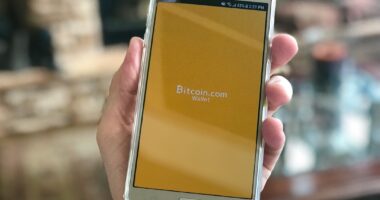Non-fungible tokens (NFTs) have significantly impacted the art world, transforming the way digital art is bought and sold. NFTs are unique digital assets that represent ownership or authenticity of specific digital content, including artwork, videos, and music. Unlike cryptocurrencies, NFTs are not interchangeable, as each token is distinct and cannot be replicated.
This uniqueness contributes to their value in the digital art market. Transactions involving NFTs typically use cryptocurrency, with Ethereum being a popular choice due to its smart contract functionality. The emergence of NFTs has created new opportunities for digital artists to monetize their work and reach a global audience.
This development has also sparked discussions about the value of digital art and the role of blockchain technology in the art market. While the concept of NFTs has existed for several years, they have recently gained widespread attention and popularity. This surge in interest can be attributed to high-profile sales of NFT art, such as Beeple’s “Everydays: The First 5000 Days,” which sold for $69 million at a Christie’s auction.
This record-breaking sale brought NFTs into the mainstream and generated significant interest from artists, collectors, and investors. As the NFT market continues to evolve, it is important for participants to stay informed about the latest developments and trends in the digital art world.
Key Takeaways
- The NFT craze is the latest trend in digital art, offering unique opportunities for artists and collectors.
- Creating NFT art using Ethereum (ETH) and Bitcoin (BTC) involves understanding blockchain technology and digital wallets.
- Choosing the right platform is crucial for selling and showcasing NFT art to reach a wider audience and maximize exposure.
- Tips for creating marketable NFT art include focusing on uniqueness, storytelling, and engaging with the community.
- Navigating legal and copyright issues is essential before selling NFT art to avoid potential disputes and protect your work.
- The future of NFTs holds potential for growth and innovation in the digital art world, with new possibilities for artists and collectors.
- Success stories from artists who have turned their creativity into digital gold with NFT art provide valuable insights and inspiration for aspiring creators.
Getting Started: How to Create Your Own NFT Art Using Ethereum (ETH) and Bitcoin (BTC)
Choosing the Right Platform
Creating your own NFT art is an exciting opportunity to showcase your creativity and potentially earn income from your digital creations. To get started, you’ll need to choose a platform that supports the creation and sale of NFTs, such as OpenSea, Rarible, or Foundation.
Setting Up Your Digital Wallet
Once you’ve selected a platform, you’ll need to connect your digital wallet, such as MetaMask, to the platform to facilitate transactions using cryptocurrency. Ethereum (ETH) is the most commonly used cryptocurrency for creating and selling NFTs due to its smart contract functionality, which allows for the creation of unique digital assets.
Minting and Selling Your NFT Art
After setting up your digital wallet and connecting it to the NFT platform, you can begin the process of minting your artwork as an NFT. Minting refers to the creation of a unique token on the blockchain that represents ownership of your digital art. This process typically involves uploading your artwork, adding relevant metadata (such as title, description, and tags), and setting any additional parameters, such as royalties for future sales. Once your artwork has been minted as an NFT, it will be listed for sale on the platform, where collectors can bid on or purchase it using cryptocurrency.
Choosing the Right Platform: Where to Sell and Showcase Your NFT Art for Maximum Exposure

When it comes to selling and showcasing your NFT art, choosing the right platform is crucial for reaching a wide audience and maximizing exposure for your work. There are several popular NFT marketplaces that cater to different types of digital art, including OpenSea, Rarible, Foundation, and SuperRare. Each platform has its own unique features and community of collectors, so it’s important to research and compare your options before deciding where to list your NFT art.
OpenSea is one of the largest and most well-known NFT marketplaces, offering a wide range of digital art, collectibles, and virtual real estate. The platform allows artists to mint and list their NFTs with minimal fees and provides a user-friendly interface for collectors to browse and purchase artwork. Rarible is another popular choice for artists looking to sell their NFT art, offering customizable features such as unlockable content and social tokens.
Foundation is known for its curated selection of digital art and strong community support for emerging artists, making it an attractive option for those looking to gain exposure and connect with collectors. SuperRare is a high-end NFT marketplace that focuses on rare digital art from top-tier artists, providing a platform for exclusive and limited-edition artwork. While these are just a few examples of NFT platforms available, it’s important to consider factors such as fees, community engagement, curation process, and overall user experience when choosing where to sell and showcase your NFT art.
By carefully selecting the right platform for your artwork, you can increase your chances of success in the competitive digital art market. In addition to dedicated NFT marketplaces, some traditional art platforms have also started to embrace NFTs as a new way to buy and sell digital art. For example, major auction houses like Christie’s and Sotheby’s have hosted high-profile sales of NFT art, bringing increased visibility and legitimacy to the digital art market.
As the NFT craze continues to grow, it’s likely that more mainstream art platforms will begin to incorporate NFTs into their offerings, providing additional opportunities for artists to showcase and sell their digital creations.
Tips for Creating Marketable NFT Art: How to Stand Out in a Crowded Digital Marketplace
| Tip | Description |
|---|---|
| Understand the NFT Market | Research current trends and popular styles to understand what sells in the NFT market. |
| Showcase Unique Artwork | Create original and distinctive artwork that stands out from the crowd. |
| Build a Strong Brand | Develop a recognizable brand and style to attract collectors and buyers. |
| Engage with the Community | Interact with other NFT artists and collectors to build a network and gain exposure. |
| Utilize Social Media | Promote your NFT art on social media platforms to reach a wider audience. |
| Offer Limited Editions | Create scarcity and exclusivity by offering limited editions of your NFT artwork. |
With the increasing popularity of NFTs, it’s more important than ever for artists to create standout artwork that resonates with collectors and stands out in a crowded digital marketplace. Here are some tips for creating marketable NFT art that captures attention and drives interest from potential buyers: 1. Tell a Story: Consider incorporating storytelling elements into your digital art to create a deeper connection with viewers.
Whether it’s through visual narratives or accompanying written descriptions, storytelling can add depth and meaning to your artwork. 2. Embrace Uniqueness: The value of NFTs lies in their uniqueness, so strive to create one-of-a-kind artwork that cannot be replicated.
Experiment with different styles, techniques, and concepts to develop a signature aesthetic that sets your work apart from others. 3. Engage with Your Audience: Building a strong online presence and engaging with your audience can help generate interest in your NFT art.
Consider sharing behind-the-scenes glimpses of your creative process, hosting live Q&A sessions, or collaborating with other artists to expand your reach. 4. Offer Value: Consider adding value to your NFT art by including unlockable content or additional perks for buyers.
This could include exclusive access to future artwork releases, limited edition physical prints, or virtual experiences related to the artwork. 5. Stay Informed: Keep up with the latest trends and developments in the NFT space to inform your artistic practice.
By staying informed about what collectors are interested in and what’s gaining traction in the market, you can tailor your artwork to meet current demand. By implementing these tips into your creative process, you can increase the marketability of your NFT art and attract potential buyers in the competitive digital marketplace. Creating marketable NFT art requires a combination of artistic vision, technical skill, and strategic thinking.
As the NFT market continues to evolve, it’s important for artists to stay adaptable and open-minded in their approach to creating digital art that resonates with collectors. By embracing uniqueness, storytelling, audience engagement, value-added features, and staying informed about market trends, artists can position themselves for success in the fast-paced world of NFT art.
Navigating the Legal and Copyright Issues Surrounding NFT Art: What You Need to Consider Before Selling Your Work
Navigating the legal and copyright issues surrounding NFT art is an important consideration for artists looking to sell their work in the digital marketplace. As with any form of creative expression, it’s crucial to understand the legal implications of minting and selling NFTs to protect your intellectual property rights and avoid potential legal disputes. Here are some key factors to consider when navigating the legal landscape of NFT art: 1.
Copyright Ownership: Before minting your artwork as an NFT, ensure that you have clear ownership of the copyright for the work. If you’ve collaborated with others or used reference materials created by third parties, it’s important to obtain permission or properly attribute their contributions to avoid copyright infringement. 2.
Licensing Agreements: Consider creating licensing agreements that outline how your artwork can be used by buyers after purchasing the NFT. This could include restrictions on commercial use, reproduction rights, or resale terms to protect the integrity of your work. 3.
Smart Contracts: When minting an NFT on platforms like Ethereum, smart contracts are used to automate transactions and enforce terms agreed upon by both parties. It’s important to carefully review and understand the smart contract terms before minting your artwork as an NFT to ensure that your rights are protected. 4.
Legal Advice: If you’re unsure about the legal implications of minting and selling NFT art, consider seeking legal advice from an attorney with experience in intellectual property law or digital assets. A legal professional can provide guidance on copyright protection, licensing agreements, smart contract terms, and other legal considerations related to NFTs. By proactively addressing these legal considerations before selling your NFT art, you can minimize potential risks and protect your rights as an artist in the digital marketplace.
In addition to copyright ownership and licensing agreements, artists should also be mindful of potential legal issues related to plagiarism, unauthorized use of intellectual property, and contractual disputes when selling NFT art. As the legal landscape surrounding NFTs continues to evolve, it’s important for artists to stay informed about best practices for protecting their creative work in the digital realm.
The Future of NFTs: Exploring the Potential for Growth and Innovation in the Digital Art World

Accessibility and Democratization
As blockchain technology becomes more accessible and user-friendly, we can expect to see a broader range of artists from diverse backgrounds entering the NFT space. Platforms that simplify the process of creating and selling NFTs will help democratize access to the digital art market.
Interactive Experiences and New Frontiers
The integration of interactive elements into NFT art presents new opportunities for engaging experiences that go beyond static visuals. Virtual reality (VR), augmented reality (AR), gamification, and other interactive technologies can enhance the value and appeal of NFT artwork.
Sustainability, Cross-Platform Integration, and New Revenue Models
The convergence of traditional art platforms with NFT marketplaces will create new opportunities for artists to reach wider audiences and bridge the gap between physical and digital art experiences. We can expect to see more collaborations between established art institutions and emerging NFT platforms. Additionally, innovations in eco-friendly blockchain protocols and energy-efficient alternatives will play a role in shaping the future of sustainable NFTs. The rise of fractionalized ownership, decentralized autonomous organizations (DAOs), and innovative royalty structures will introduce new revenue models for artists selling NFTs.
Success Stories: Learn from the Artists Who Have Turned Their Creativity into Digital Gold with NFT Art
The rise of NFTs has brought forth numerous success stories from artists who have turned their creativity into digital gold through selling their artwork as non-fungible tokens. These success stories serve as inspiration for aspiring artists looking to enter the world of NFT art and provide valuable insights into what it takes to thrive in this rapidly evolving space. One notable success story is that of Beeple (Mike Winkelmann), whose groundbreaking sale of “Everydays: The First 5000 Days” at Christie’s auction house catapulted him into mainstream recognition as one of the highest-selling living artists.
Beeple’s journey from sharing daily digital artworks online to achieving a multimillion-dollar sale demonstrates how perseverance, consistency, and embracing new technologies can lead to unprecedented success in the digital art world. Another artist who has achieved remarkable success with NFT art is Krista Kim, known for her ethereal digital paintings that explore themes of spirituality and technology. Kim’s pioneering use of blockchain technology as a medium for her artwork has garnered international acclaim and positioned her as a leading figure in the intersection of art and technology.
In addition to individual success stories, collaborative projects within the NFT space have also made waves in the art world. The artist collective known as FVCKRENDER has gained attention for their innovative approach to creating immersive 3D artworks that push boundaries in digital artistry. These success stories underscore the transformative power of NFTs in empowering artists to monetize their work directly while reaching global audiences without traditional gatekeepers.
By learning from these trailblazing artists who have embraced innovation and adapted their creative practices for the digital age, aspiring creators can gain valuable insights into how they too can thrive in the world of NFT art. In conclusion, understanding the nuances of creating marketable NFT art requires a combination of artistic vision, technical skill, strategic thinking, legal awareness, adaptability, staying informed about market trends while embracing uniqueness storytelling audience engagement value-added features staying informed about market trends copyright
FAQs
What is NFT art?
NFT art, or non-fungible token art, refers to digital artwork that is tokenized on a blockchain, making it unique and irreplaceable. NFTs allow artists to create and sell digital art with proof of ownership and authenticity.
How can I make NFT art?
To make NFT art, you can start by creating digital artwork using software or digital tools. Once your artwork is ready, you can then mint it as an NFT on a blockchain platform, such as Ethereum or Tezos, using a marketplace or NFT platform.
What are the steps to make NFT art?
The steps to make NFT art include creating digital artwork, choosing a blockchain platform to mint the NFT, creating a digital wallet to store the NFT, and then minting the artwork as an NFT on a marketplace or NFT platform.
What do I need to make NFT art?
To make NFT art, you will need access to digital art creation tools or software, a digital wallet to store your NFTs, and access to a blockchain platform or NFT marketplace to mint and sell your NFT art.
How do I sell my NFT art?
Once you have minted your NFT art, you can list it for sale on NFT marketplaces or platforms. Potential buyers can then bid on or purchase your NFT art using cryptocurrency, and you will receive the proceeds in your digital wallet.





